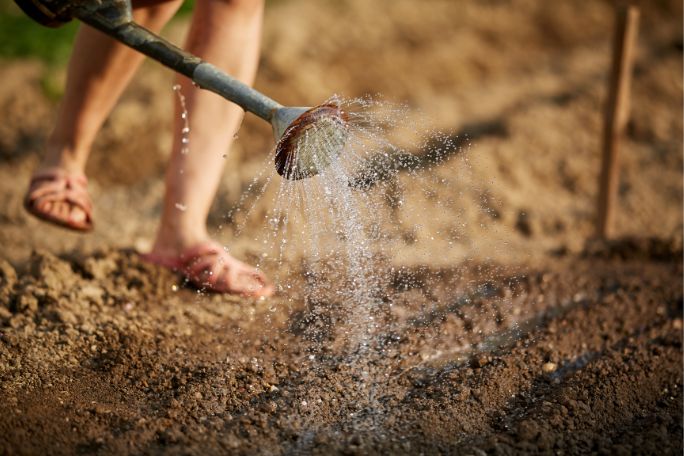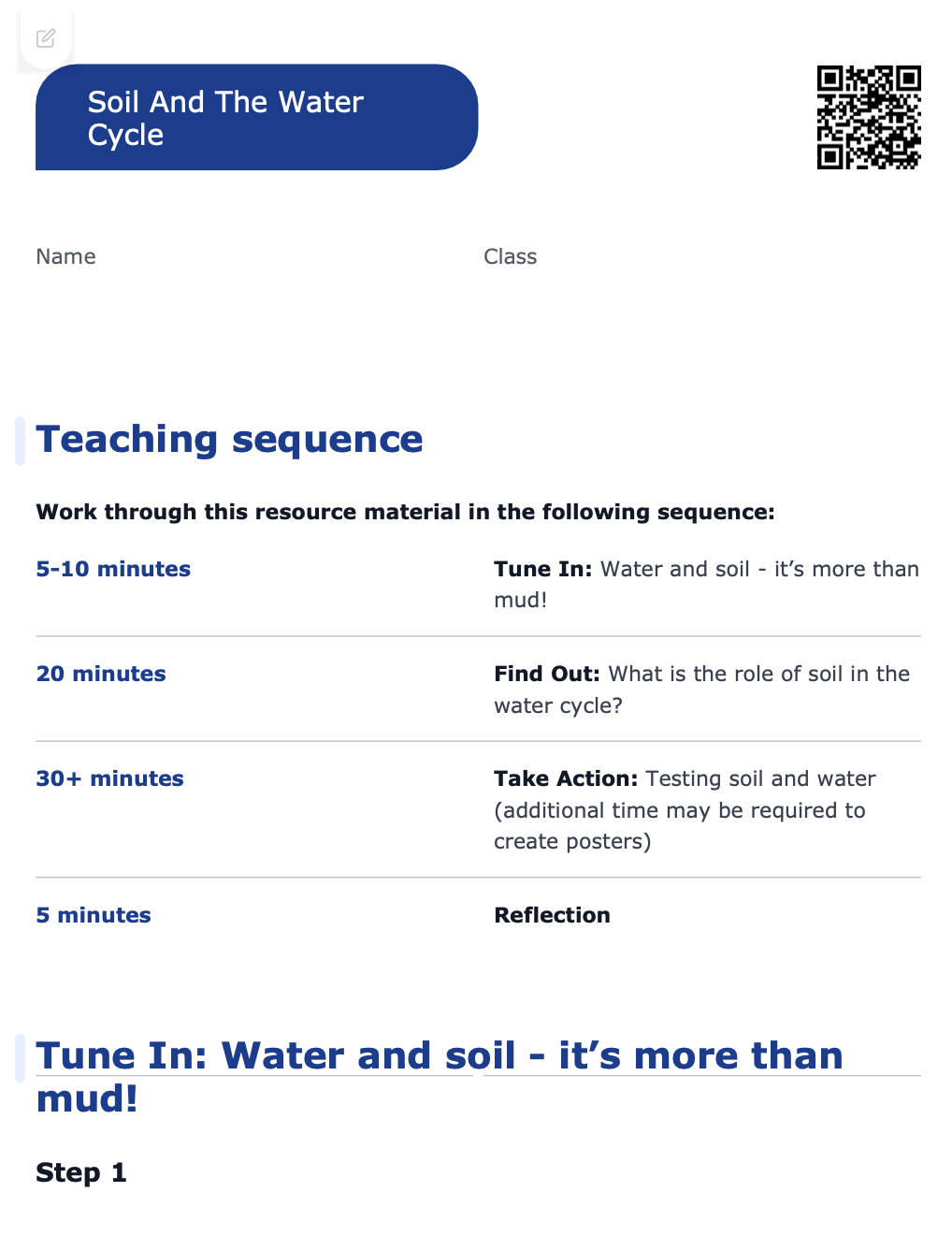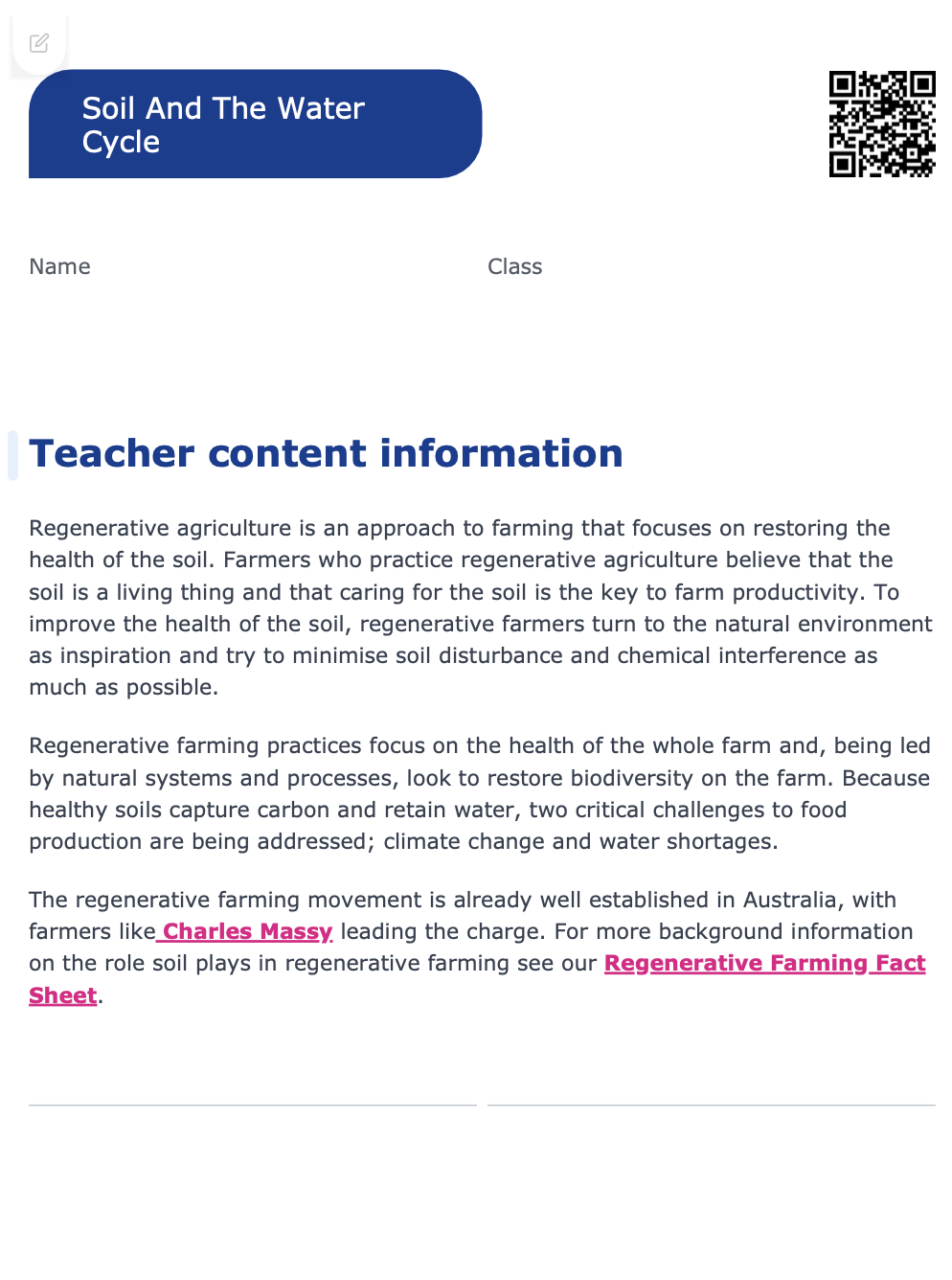Lesson summary
Students explore the role of soil in the water cycle. They learn about how soil health will determine the ability of the soil to retain water. They conduct an experiment to see how different types of soil repel or retain water.
Learning intentions:
Students will...
- explore the water cycle
- investigate how healthy soils retain and filter water through the water cycle.
Success criteria:
Students can...
- describe why healthy soils are important for the water cycle
- apply scientific skills to analyse and assess soil samples for water retention.
Lesson guides and printables
Curriculum links
Select your curriculum from the options below.
Lesson details
Skills
This lesson is designed to build students’ competencies in the following skills:
- collaboration
- problem solving
- curiosity
Curriculum Mapping
Content descriptions:
Australian Curriculum (v9.0) content descriptions - Year 4 Science
Students learn to:
- identify sources of water and describe key processes in the water cycle, including movement of water through the sky, landscape and ocean; precipitation; evaporation; and condensation (AC9S4U02)
- use provided scaffolds to plan and conduct investigations to answer questions or test predictions, including identifying the elements of fair tests, and considering the safe use of materials and equipment (AC9S4I02)
- follow procedures to make and record observations, including making formal measurements using familiar scaled instruments and using digital tools as appropriate (AC9S4I03)
General capabilities: Critical and creative thinking.
Cross-curriculum priority: Sustainability.
Relevant parts of Year 4 Science achievement standards:
Students identify key processes in the water cycle and describe how water cycles through the environment. Students pose questions to identify patterns and relationships and make predictions based on observations. They plan investigations using planning scaffolds, identify key elements of fair tests and describe how they conduct investigations safely.
UN Sustainable Development Goals
Target 2.4: By 2030, ensure sustainable food production systems and implement resilient agricultural practices that increase productivity and production, that help maintain ecosystems, that strengthen capacity for adaptation to climate change, extreme weather, drought, flooding and other disasters and that progressively improve land and soil quality.
Target 15.3: By 2030, combat desertification, restore degraded land and soil, including land affected by desertification, drought and floods, and strive to achieve a land degradation-neutral world.
Resources Required
- Experiment cards (each experiment card includes the resources required for the experiment - select the number of experiments to suit your available time and resources):
Additional Info
Level of teacher scaffolding: High - oversee class discussions and lead students in soil experiments.
Special thanks to:

This lesson has been developed with the support of the Macdoch Foundation.
Cool's curriculum team continually reviews and refines our resources to be in line with changes to the Australian Curriculum.



Welcome back!
Don't have an account yet?
Log in with:
Create your free Cool.org account.
Many of our resources are free, with an option to upgrade to Cool+ for premium content.
Already have an account?
Sign up with:
By signing up you accept Cool.org's Terms and Conditions(Opens in new tab) and Privacy Policy(Opens in new tab).